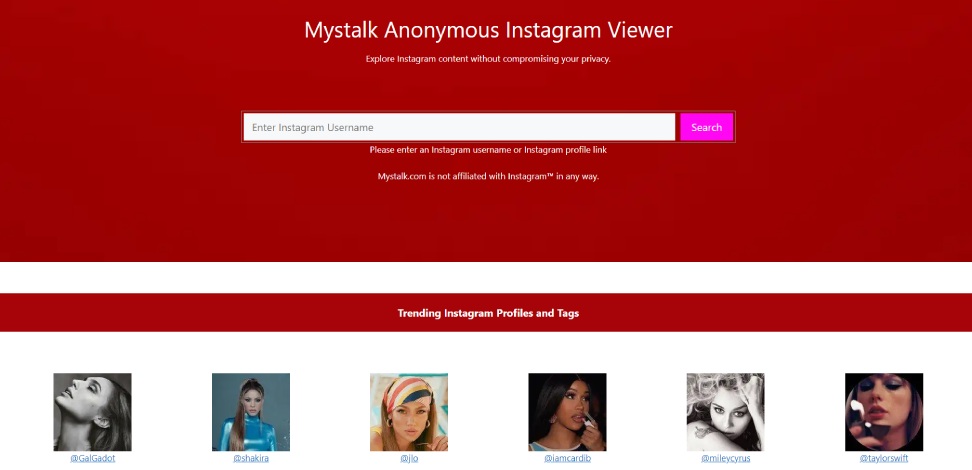If we consider “MyStalk” as a hypothetical social media analytics or tracking tool, I can provide an overview of how such tools generally function.
Social media tracking and analytics tools often exist to help individuals or businesses gain insights into their online presence, understand audience behavior, and optimize their strategies. These platforms typically aggregate data from various social media channels like Facebook, Twitter, Instagram, LinkedIn, etc. Here’s a comprehensive guide on how a social media tracking tool might operate:
1. Data Collection:
These tools collect public data available on social media platforms. They might require users to link their social media accounts to access analytics for their own profiles, or they may aggregate data without direct user involvement, focusing on public profiles and posts.
2. User Dashboard:
Upon logging in, users are presented with a dashboard providing an overview of their social media performance. This may include metrics such as follower count, engagement rate, reach, impressions, demographics of followers, top-performing posts, etc.
3. Performance Analytics:
Users can delve into detailed analytics for individual posts or profiles. They can track metrics like likes, comments, shares, click-through rates, and other engagement indicators. These tools often use algorithms to predict future performance based on historical data.
4. Competitor Analysis:
Some platforms allow users to track and compare their performance with competitors or similar profiles. This feature helps in understanding market trends, identifying strengths and weaknesses, and refining strategies.
5. Audience Insights:
Understanding the audience is crucial. These tools provide insights into demographics, including age, gender, location, interests, and online behavior of followers. This data helps tailor content to better resonate with the target audience.
6. Content Strategy Optimization:

Based on the analytics provided, users can refine their content strategy. Insights about the type of content that performs best, ideal posting times, and engagement patterns help in creating more impactful content.
7. Reporting and Exporting:
Users can generate reports summarizing their social media performance, often in customizable formats. This feature is useful for presentations, strategy meetings, or record-keeping. Some tools also allow exporting raw data for further analysis.
8. Monitoring and Alerts:
Monitoring tools track mentions of specific keywords, hashtags, or brands across social media platforms. They provide real-time alerts or notifications about any mentions, enabling quick responses to comments or concerns.
9. Paid Promotion Optimization:
For businesses, these tools might offer insights into the effectiveness of paid promotions. They can track return on investment (ROI) for ad campaigns, helping allocate resources more efficiently.
10. Data Privacy and Security:
Adherence to privacy policies and data security is crucial. These platforms need to comply with regulations to ensure user data protection and ethical data usage.
However, it’s important to note that the specific features and functionalities might vary among different social media tracking tools, and the term “MyStalk” might refer to a completely different concept or service that emerged after my last update. Always verify and review any new platforms or services for credibility and data privacy before using them.
Also Read:

